A review of Maternal Dystocia - Nutritional and Non-Nutritional Factors
Did you know producers can use a range of strategies to increase ewe and lamb survival?
| Project start date: | 26 February 2020 |
| Project end date: | 01 November 2020 |
| Publication date: | 18 June 2020 |
| Project status: | In progress |
| Livestock species: | Sheep, Lamb |
| Relevant regions: | National |
|
Download Report
(1.6 MB)
|
|
Summary
Annual losses from ewe mortality during pregnancy are estimated to cost the Australian sheep industry 2-4% of production each year. However, it is not known what proportion of ewe deaths are related to dystocia (difficult birth).
This review identified nutritional and non-nutritional factors that affect dystocia in ewes. The project focused on the economic costs of maternal dystocia, gaps in knowledge and prospective mitigation strategies.
The final report outlines several mitigation strategies and three key control points for research, management and reduction of dystocia:
- The preparation of the ewe and developing foetus for birth and survival.
- The factors that directly influence the process of birthing and the ability for ewes and lambs to recover from a difficult birth.
- The genetics within, and between, breeds that contribute to dystocia risk.
Objectives
This project reviewed literature to:
-
determine the variation of dystocia between breeds and litter size
-
assess and interpret the physiological, behavioural, hormonal and biochemical changes associated with dystocia
-
estimate the economic impact of dystocia
-
identify risk factors and opportunities to mitigate dystocia in sheep to inform future research and development priorities.
Key findings
The literature review identified several key factors regarding the impact that maternal dystocia has on the Australian red meat industry:
-
When considering lamb mortality that occurs with the death of ewe, the impact on the Australian sheep industry is $56 million a year.
-
An estimated 367,000 ewe and 6.9 million lamb deaths a year are attributed to dystocia.
-
Proportional mortality attributed to dystocia is not significantly different between Merino ewes (49%) and non-Merino ewe cross breeds (46%).
-
Vaccinating pregnant ewes against bacteria infections and good hygiene during lambing reduces the risk of birth complications.
Several mitigation strategies were identified during this project that have potential to help reduce the impacts of dystocia. These include:
-
managing single-bearing and multiple-bearing ewes separately and according to nutritional requirements
-
addressing mineral nutrition during late pregnancy and lambing
-
reducing mob size during pregnancy and lambing
-
providing appropriate supervision during lambing
-
providing shelter using trees and shrubs during lambing.
Benefits to industry
It is estimated about 6.9 million lamb deaths and 367,500 ewe deaths can be attributed to dystocia in Australia each year. This reduces national profit by $616 million for dystocia-related lamb mortality and $56 million for ewe mortality.
This review will help the industry identify the size of the ewe mortality issue and develop strategies to address dystocia.
MLA action
MLA Donor Company has recently called for research and development projects to address the highest priority recommendation/s from this review through the Sheep Reproduction Strategic Partnership.
Future research
Further studies are required to determine:
-
links between the risk of dystocia and ewe weight/condition score during pregnancy
-
if nutritional management can reduce the risk of some diseases that lead to dystocia
-
any effects of breed, other than the breed of the ram and the number of lambs a ewe is carrying.
A staged approach is recommended to address these knowledge gaps, beginning with an investigation and potential re-analysis of currently available datasets, combined with a national survey of producers.
More information
| Contact email: | reports@mla.com.au |
| Primary researcher: | Murdoch University |


